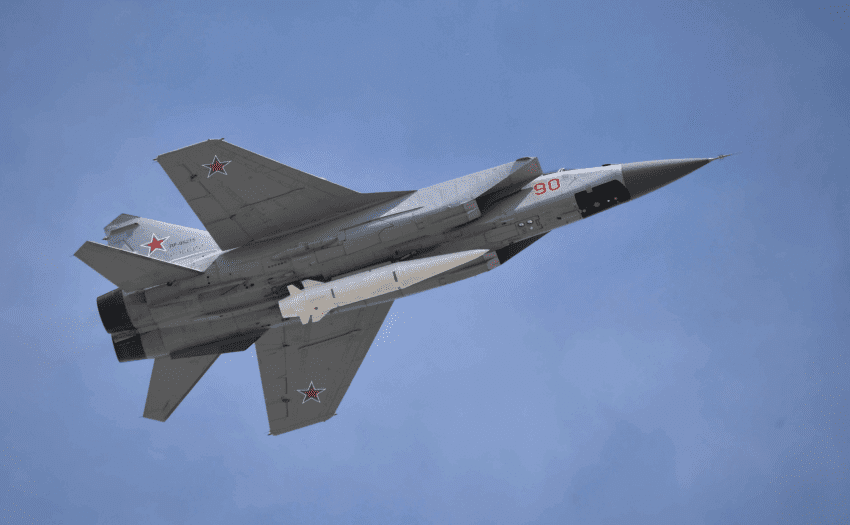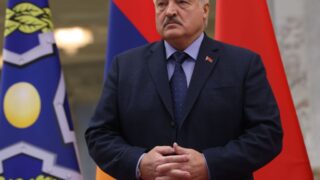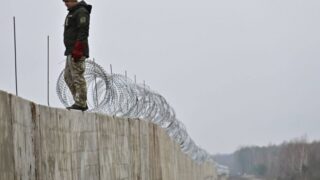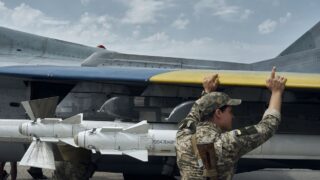
Russian Kinzhal-capable MiG-31K fighters likely left Belarus after brief stay, monitoring group reports
Russian MiG-31K fighter jets have likely left Belarus after a brief stay, according to a report from the Belaruski Hayun monitoring group. The group observed the arrival and subsequent departure of two Russian MiG-31K aircraft over a span of just two days.
Russia’s MiG-31Ks pose a major threat to Ukraine as carriers of the Kh-47M2 Kinzhal air-launched ballistic missiles, capable of reaching most locations within the country within minutes. When these aircraft take off, Ukraine issues nationwide air alerts. Typically, Russia launches Kalibr missiles from hundreds of kilometers away to keep its MiGs out of Ukraine’s air defense range. Stationing MiG-31Ks in Belarus could raise the threat to Ukraine by shortening the distance to Kyiv, the primary target of Kalibrs, while leveraging Belarusian airspace—Ukraine has yet to target Russian assets within Belarusian territory.
The monitoring group reported on 12 October that two MiG-31K aircraft of the Russian Aerospace Forces fighter jets arrived in Belarus on 9 and 10 October. On 10 October at 15:10, it became known that the MiGs were observed taking off from the Machulishchy airfield.
Belaruski Hayun stated,
“Based on the available information, we know that after takeoff, the MiG-31Ks did not return to the Machulishchy airfield.”
The group further detailed the flight path of the jets, noting that “The fighters headed south, flew past Baranavichy, and then turned east towards the Russian Federation.”
While some monitoring channels reported the subsequent landing of the MiGs in Machulishchy, Belaruski Hayun did not confirm or report on the fighters’ landing. Instead, they concluded,
“Thus, at the moment, it is most likely that the MiGs left the territory of Belarus and returned to Russia after takeoff.”
Currently, Belarus is Russia’s de facto client state. Previously, Kyiv had warned the Belarusian government against attempting to invade Ukraine during Minsk’s several border deployments and exercises, as Belarus appeared to be simulating aggressive intentions to draw more Ukrainian forces to the border, to benefit Russia elsewhere.
Related:














